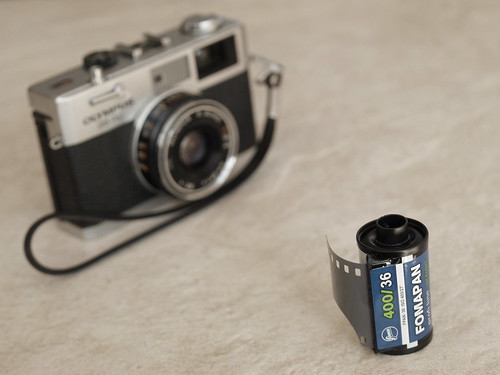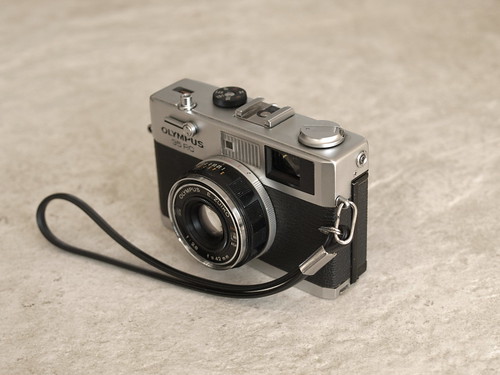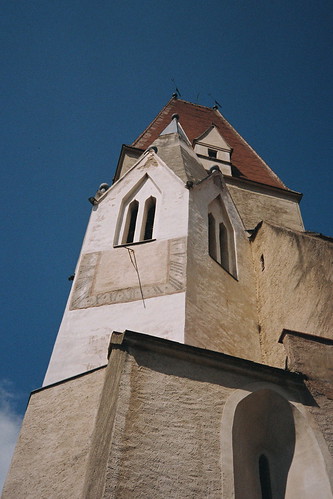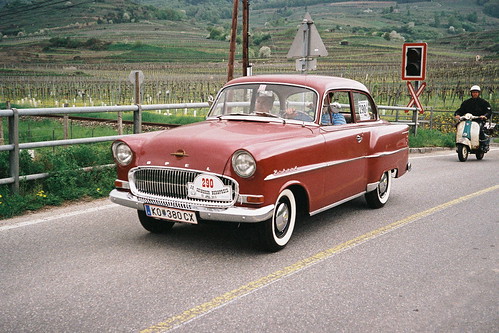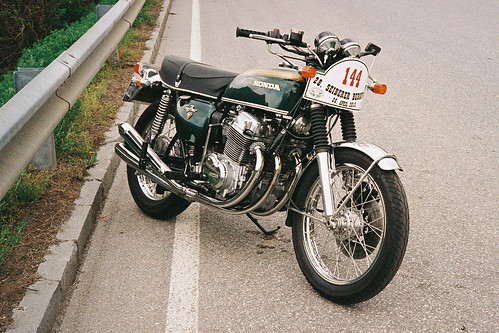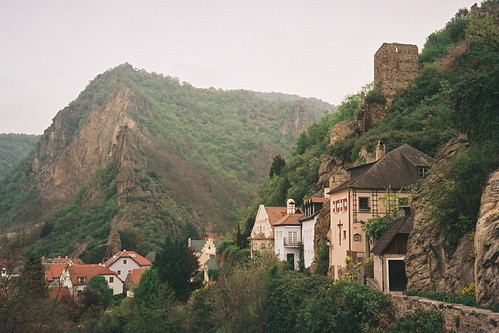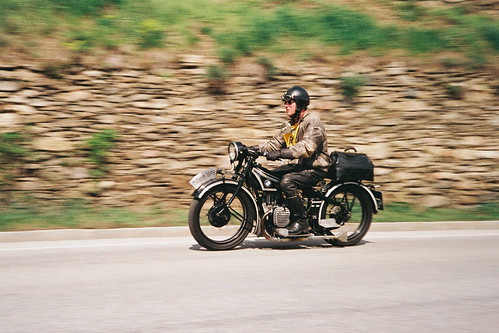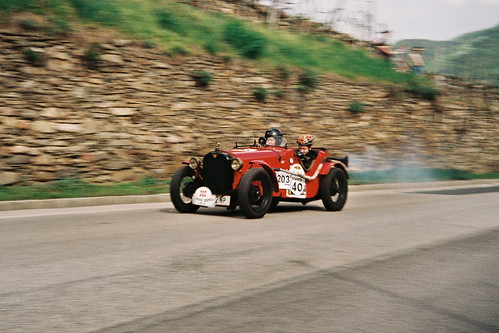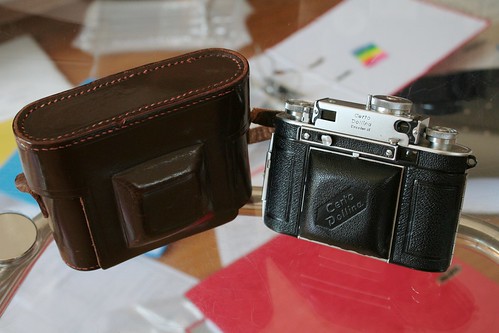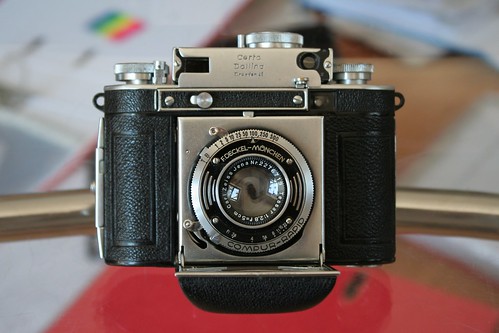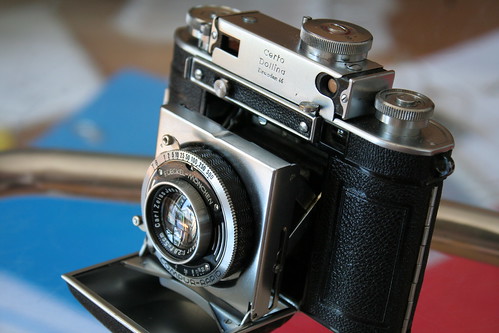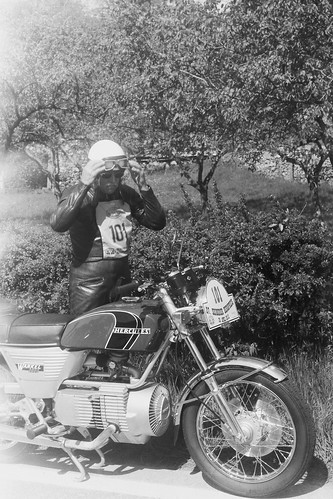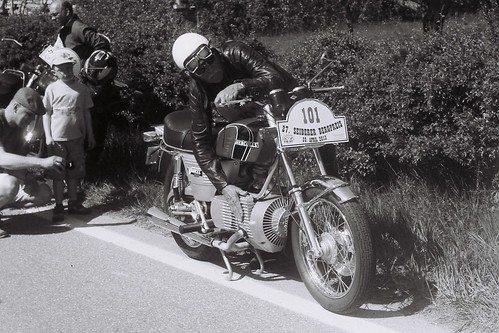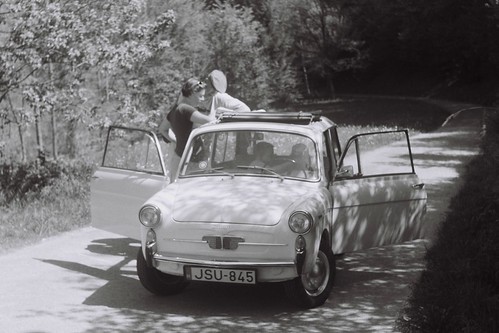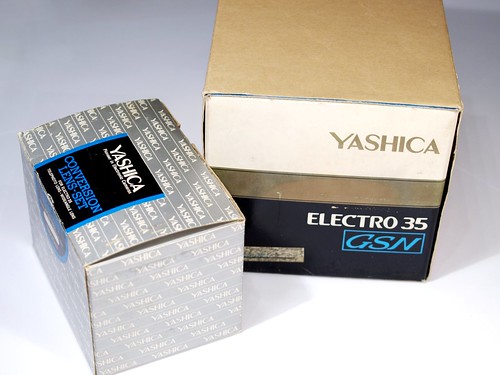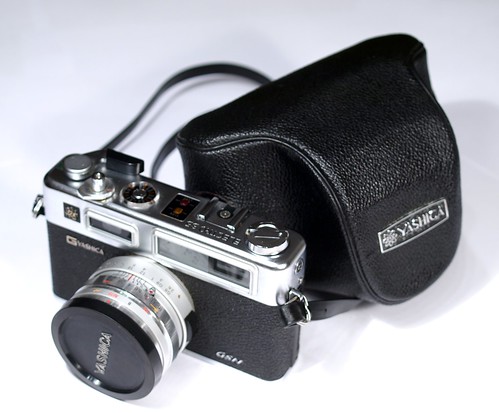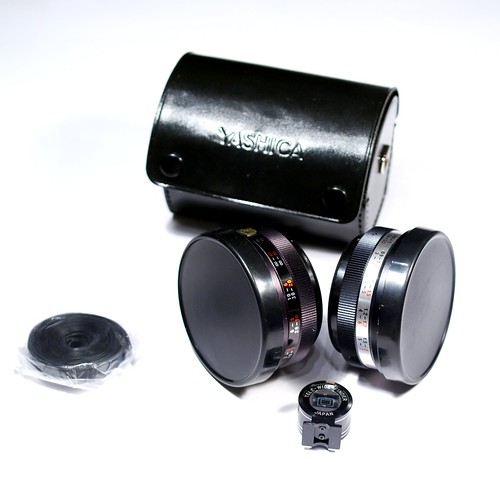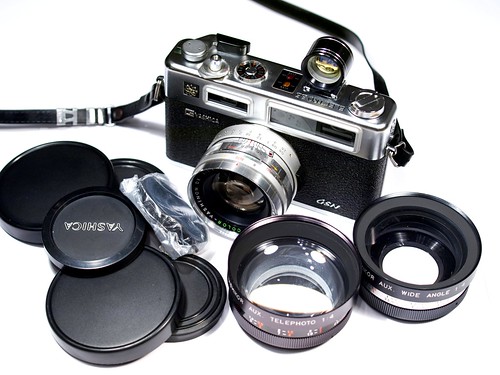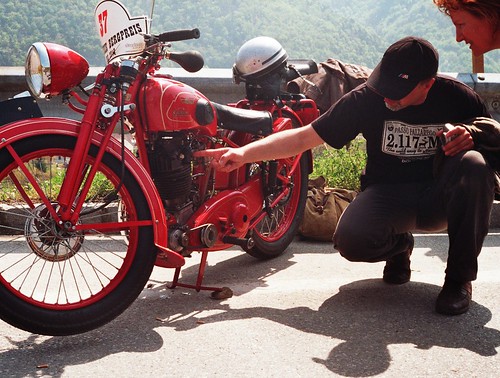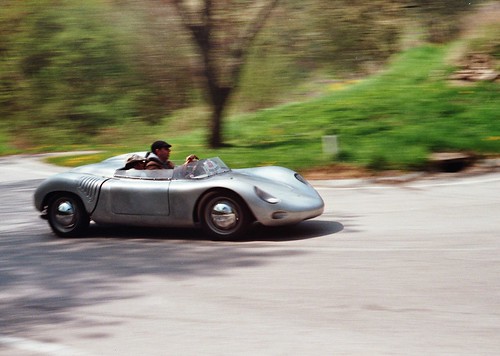- Type: Ricoh 500 G
- Serial No: 05 696143
- Manufactured: from the early 70's
- Manufacturer: Ricoh
- Format: 135
- Shutter: two bladed metal leaf shutter
- Shutter speeds: B, 8, 15, 30, 60, 125, 250, 500
- Lens: Rikenon f=40mm 1:2.8
- Aperture: 2.8, 4, 5.6, 8, 11, 16
- Lens Serial No: -
- Lens mount: -
- Last CLA: 2012
- Condition: light meter is not functioning
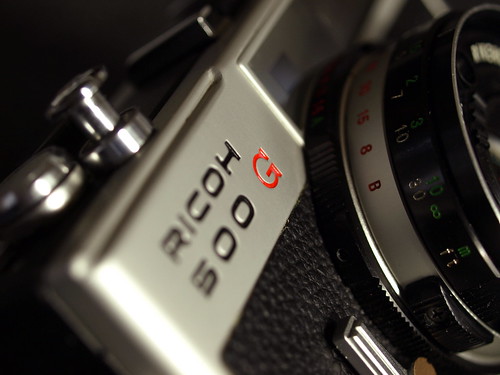
Falling in love with compact Japanese rangefinders form the 70's is easy. They usually are seriously good looking, have unique character, convincing feature list and some kind of professional air. The Ricoh 500 G is no exception. It was intended to be a cheap alternative of the higher quality rangefinders of the compact class. The lower price was achieved by using cheaper materials and leaving out the flashmatic function so the photographer had to calculate the right aperture setting for the given flash key number using a simple formula. But still, the little 500 G was a very capable little camera.
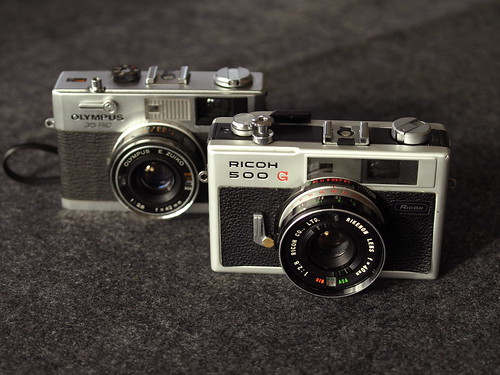
Compared to the beloved Olympus 35 RC, the Ricoh has almost the same size. Its body is thicker than the Oly's but the film winding lever is at the top so it doesn't extend behind the camera. Their overall thickness would be about the same if the Olympus did not use an indented filter thread. The winner here is the Oly with a few millimeters.
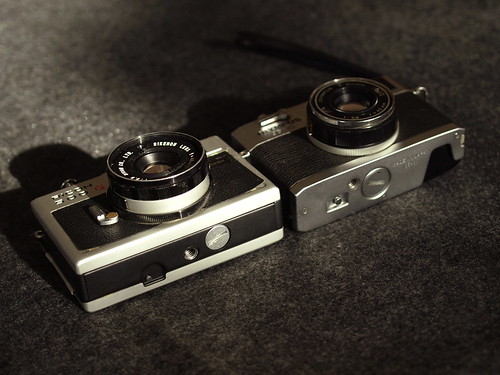
The first thing you realize when you take the 500 G in your hand after putting down the 35 RC is that the Ricoh camera is made of aluminium. The cheaper metal has its disadvantages though: the camera easily gets scratched or dented and the back of the camera deformed. The latter results in imperfect closure which leads to light leaking. The 35 RC is more resistant to physical impacts.
Another problem with the little Ricoh is the light sealing. By design, the whole back plate has to be covered with it which makes it prone to light leaking by design. And get prepared: the original sealing was not meant to be long lasting so it became a dark sticky mess for now. Replacing it a real pain. It's like a mix of half-dried glue and used engine oil. And you have to completely remove it before put on the new one. No light sealing kit available so you have to carefully select the thickness of the replacement material and do some handwork with the scissors.
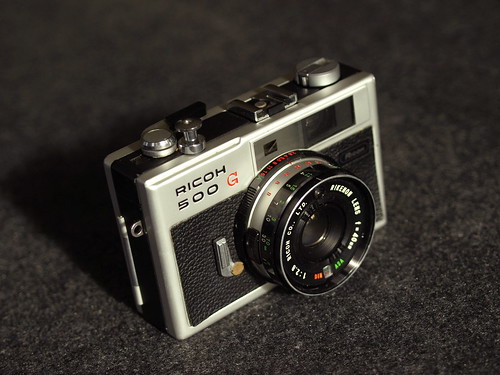
Apart from the flashmatic mode the two cameras have almost identical technical parameters.
The Ricoh 500 G outperforms the Olympus 35 RC in terms of slow shutter speeds: it has 1/8 while the Oly's slowest speed is 1/15. But the Oly can stop down the aperture to 22 while the Ricoh's smallest hole is marked with 16. The rest is more or less the same: 2 metal blade shutter, 1 m closest focusing distance, etc.
I can't say anything about light metering and automatic mode because the circuitry in my camera is broken. Not a problem for me because I usually trust the light metering to my mobile phone.
And now the aperture of the Ricoh 500 G:

This is something the Olympus 35 RC should envy: an almost round 4 blade aperture. Do you remember its 2 bladed shame? No? Here it is, the Olympus 35 RC aperture:

Now let's see the handling. You have to set aperture, speed and focus with rings on the lens. One could think that The 35 RC's setup is eaiser to handle with the speed setting dial on the top but no. The rings of the 500 G are ergonomically designed and just stiff enough to let the photographer turn just one of them at a time. Definitely more handy than the Olympus setup where it's virtually impossible to set aperture without changing focus. However, a small Japanese hand comes handy to set the aperture on both.

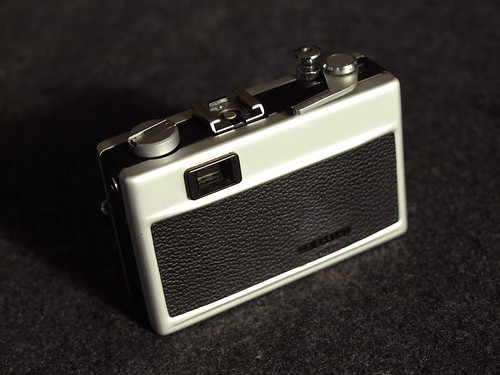
In theory, focusing is more precise on the Ricoh due to the longer rotation of the focusing ring. I had no focusing problem with the Oly, though. Rangefinder base distance is the same.
The viewfinder has parallax marks on both cameras but the 500 G doesn't show the speed setting - only the aperture.
The overall feel of the camera is cheapo due mostly to the aluminium and plastic used and the sounds the camera makes. The Olympus 35 RC gives you a more pro feeling.
Now let's see the image quality. There are not too many photographers who still use this camera but the general opinion is that the little Rikenon lens is a good performer. I expected beautiful bokeh due to the rounded aperture. (The Olympus 35 RC disappointed me from this prospective.) Well, let's see what it looks like:

It can be said that the out of focus area is not the strength of the Ricoh 500 G. Nor the wide aperture:

Those usually saturated colors get washed-out and that crisp contrast simply disappears when one opens the diaphragm wider. But at leas no vignetting - which can be disturbing stopped down to f/16:
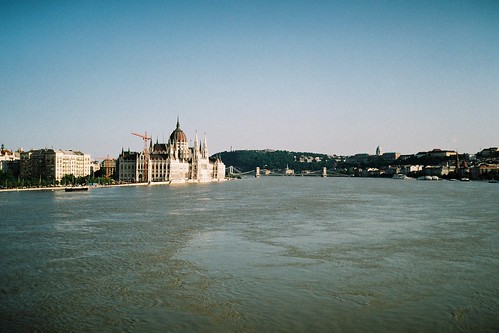
Is this camera that bad? No. If you keep aperture on f/11 you can have nicely saturated and contrasty images like these below. Just don't forget to put everything in focus.



It is not impossible to take good photos with the Ricoh 500 G but if you are looking for a versatile little rangefinder then the Olympus 35 RC is definitely a better choice.
